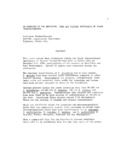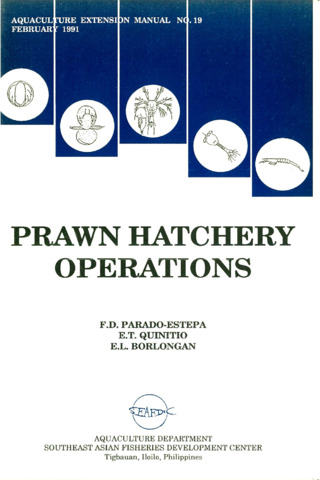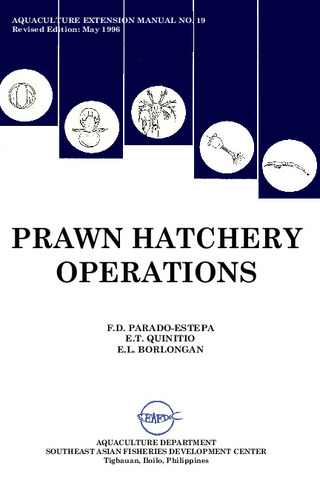Perlihatkan publikasi sederhana
Microsatellite and mitochondrial haplotype diversity reveals population differentiation in the tiger shrimp (Penaeus monodon) in the Indo-Pacific region
Share
| dc.contributor.author | You, E.-M. | |
| dc.contributor.author | Chiu, T.-S. | |
| dc.contributor.author | Liu, K.-F. | |
| dc.contributor.author | Tassanakajon, A. | |
| dc.contributor.author | Klinbunga, S. | |
| dc.contributor.author | Triwitayakorn, K. | |
| dc.contributor.author | de la Peña, Leobert D. | |
| dc.contributor.author | Li, Y. | |
| dc.contributor.author | Yu, H.-T. | |
| dc.date.accessioned | 2014-05-23T07:26:48Z | |
| dc.date.available | 2014-05-23T07:26:48Z | |
| dc.date.issued | 2008 | |
| dc.identifier.citation | You, E.-M., Chiu, T.-S., Liu, K.-F., Tassanakajon, A., Klinbunga, S., Triwitayakorn, K., … Yu, H.-T. (2008). Microsatellite and mitochondrial haplotype diversity reveals population differentiation in the tiger shrimp (Penaeus monodon) in the Indo-Pacific region. Animal Genetics, 39(3), 267-277. | en |
| dc.identifier.issn | 0268-9146 | |
| dc.identifier.uri | http://hdl.handle.net/10862/2087 | |
| dc.description.abstract | The black tiger shrimp (Penaeus monodon) is an ecologically and economically important penaeid species and is widely distributed in the Indo-Pacific region. Here we investigated the genetic diversity of P. monodon (n = 355) from eight geographical regions by genotyping at 10 microsatellite loci. The average observed heterozygosity at various loci ranged from 0.638 to 0.743, indicating a high level of genetic variability in this region. Significant departures from Hardy–Weinberg equilibrium caused by heterozygote deficiency were recorded for most loci and populations. Pairwise FST and RST values revealed genetic differentiation among the populations. Evidence from the assignment test showed that the populations in the West Indian Ocean were unique, whereas other populations examined were partially admixed. In addition, the non-metric multidimensional scaling analysis indicated the presence of three geographic groups in the Indo-Pacific region, i.e. the African populations, a population from western Thailand and the remaining populations as a whole. We also sequenced and analysed the mitochondrial control region (mtCR) in these shrimp stocks to determine whether the nuclear and mitochondrial genomes show a similar pattern of genetic differentiation. A total of 262 haplotypes were identified, and nucleotide divergence among haplotypes ranged from 0.2% to 16.3%. Haplotype diversity was high in all populations, with a range from 0.969 to 1. Phylogenetic analysis using the mtCR data revealed that the West Indian Ocean populations were genetically differentiated from the West Pacific populations, consistent with the microsatellite data. These results should have implications for aquaculture management and conservation of aquatic diversity. | en |
| dc.language.iso | en | en |
| dc.publisher | International Society for Animal Genetics | en |
| dc.relation.uri | http://biodiv.sinica.edu.tw/symposium/genomics_ch/doc/animal_genetics.pdf | |
| dc.subject | Decapoda | en |
| dc.subject | Penaeidae | en |
| dc.subject | Penaeus monodon | en |
| dc.subject | heterozygotes | en |
| dc.title | Microsatellite and mitochondrial haplotype diversity reveals population differentiation in the tiger shrimp (Penaeus monodon) in the Indo-Pacific region | en |
| dc.type | Article | en |
| dc.citation.volume | 39 | |
| dc.citation.issue | 3 | |
| dc.citation.spage | 267 | |
| dc.citation.epage | 277 | |
| dc.citation.journalTitle | Animal Genetics | en |
| dc.subject.asfa | aquaculture | en |
| dc.subject.asfa | nature conservation | en |
| dc.subject.asfa | data processing | en |
| dc.subject.asfa | genetic variation | en |
| dc.subject.asfa | evolution | en |
| dc.subject.asfa | genomes | en |
| dc.subject.asfa | genotyping | en |
| dc.subject.asfa | haplotypes | en |
| dc.subject.asfa | microsatellites | en |
| dc.subject.asfa | mitochondria | en |
| dc.subject.asfa | nucleotides | en |
| dc.subject.asfa | Oceans | en |
| dc.subject.asfa | phylogeny | en |
| dc.subject.asfa | population genetics | en |
| dc.identifier.essn | 1365-2052 | |
| dc.identifier.doi | 10.1111/j.1365-2052.2008.01724.x | |
| dc.subject.scientificName | Penaeus monodon | en |
Files in this item
| Files | Size | Format | View |
|---|
Publikasi ini ada di koleksi berikut
-
AQD Journal Articles [1223]
These papers were contributed by AQD staff to various national and international journals



